Mastering the Pizza Oven Peel Paddle: A Comprehensive Guide
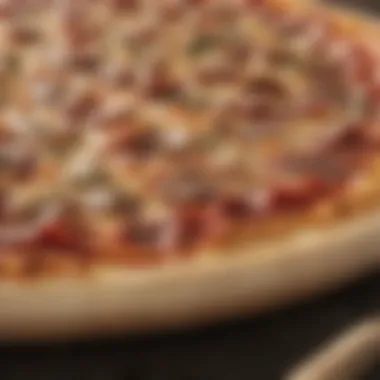
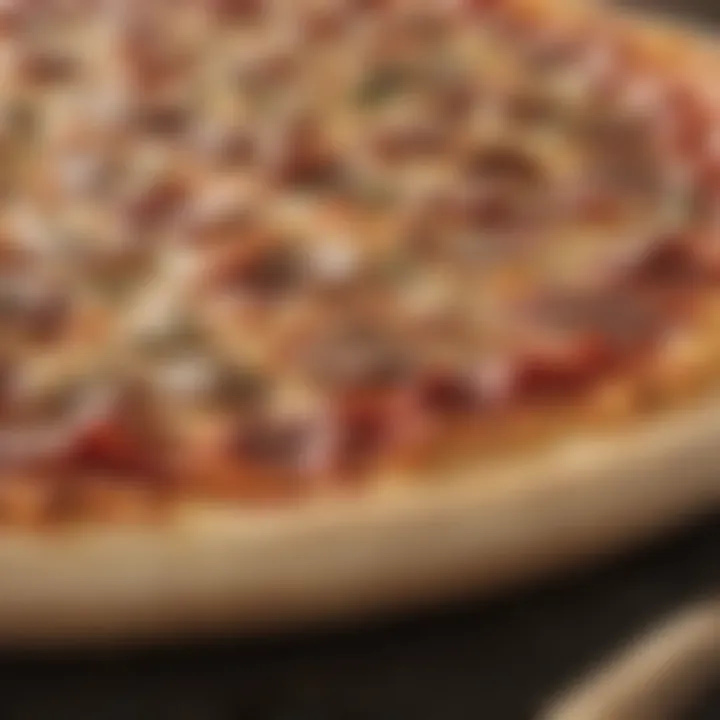
Intro
The pizza oven peel paddle plays a crucial role in the art of pizza-making. It is a versatile kitchen tool designed to slide pizzas effortlessly in and out of hot ovens. Knowledge about its design, functionalities, and the right choice for individual contexts greatly enhances the pizza-making experience. In this discussion, we will unpack the essential features of the pizza peel paddle. We won't only talk about the material options available but also how one can maintain it. The proper usage has a significant impact on the outcome of your creation, whether you are preparing pizza at home or in a professional arena. Meanwhile, for culinary enthusiasts or budding cooks, mastery of tools like the peel paddle is key to elevating their dishes.
Recipe Highlight
Classic Margherita Pizza
A Classic Margherita Pizza is simply perfect. Its blend of flavors is loved by many and will showcase the importance of using a pizza peel paddle artfully.
Essential Ingredients:
- Fresh pizza dough
- High-quality tomato sauce
- Mozzarella cheese
- Fresh basil leaves
- Olive oil
- Salt
Estimated Time:
- Preparation: 30 minutes
- Cooking: 10-15 minutes
- Total: 45 minutes
Yield:
This recipe makes two 12-inch pizzas.
Step-by-Step Instructions
- Prepare the Dough: If you are using store-bought dough, follow the packet instructions. Otherwise, begin with your homemade dough. Let it rest for a while.
- Preheat the Oven: Preheat your oven to at least 475°F (246°C) to get suitable heat for the pizza.
- Shape the Pizza: On a lightly floured surface, stretch and shape your pizza dough into a round disc, about 12 inches across.
- Add Sauce and Toppings: Carefully spread the tomato sauce over the dough, leaving some space for the crust. Add mozzarella randomly, then sprinkle salt, and finish it off with fresh basil leaves.
- Using the Peel: Dust your pizza peel paddle with flour or cornmeal. This prevents sticking. Gently slide your pizza onto the peel. In one confident motion, transfer the pizza from the peel to the hot oven.
- Bake the Pizza: Cook for 10-15 minutes until the crust is golden and cheese is bubbly.
- Serving: Once done, carefully use the peel to remove it from the oven and let it rest for a minute before slicing.
Cooking Techniques:
Using a pizza stone can enhance the quality of the pizza crust. It cradles heat, producing a perfect bake every time.
Insider Advice:
Ensure the peel is well-dusted with flour or cornmeal to facilitate the easy transition of pizza from the peel to oven. Common mistakes are not preheating the oven sufficiently which affects pizza texture.
Variations and Substitutions
To cater different diets:
- Use gluten-free dough if necessary.
- Vegan cheese can substitute mozzarella for plant-based options.
- Add toppings like vegetables or meats based on preference can elevate taste complexity.
Additional Flavor:
- Drizzle with garlic oil before baking.
- Include parmesan cheese for extra richness.
Time-Saving Cooking Tips
Saving time in the kitchen can streamline the cooking process.
- Chop Ahead: Pre-chop your ingredients such as basil or garlic ahead of the cooking time.
- Efficient Tool: Use a kitchen scale to measure portions quickly.
- Batch Cooking: Make extra dough for freezing to aid future pizza sessions; portion it out into balls, store in the freezer.
Nutritional Information
A Classic Margherita Pizza provides:
- Calories: Approximately 250 calories per serving depending on quantity utilized.
- Key Nutrients: High in carbohydrates, protein, calcium, and Vitamins A and C, aiding to a balanced meal.
- Suitable for omnivores; variations are available for gluten-free and vegan dietary plans.
To deepen culinary skills, knowledge of tools and techniques in making your pizza is paramount. The pizza oven peel paddle facilitates a smoother experience, making every enthusiast excited to create delicious options in their kitchen.
Prologue to the Pizza Oven Peel Paddle
The pizza oven peel paddle is a tool that plays a crucial role in pizza preparation, whether in home kitchens or professional settings. It serves as a bridge between the cook and the oven, making it invaluable for anyone aspiring to make perfect pizza. The peel's main purpose is to slide pizzas in and out of an oven without damaging them.
Understanding the pizza peel's significance occurs through what the paddle offers. The design may seem simple, but the nuances matter greatly in ensuring that the pizza maintains its shape and integrity during the transfer process. Craftsmanship affects the feel, weight restrictions, and types of materials used—all of which come together to create peaks in the preparation of pizza.
As food lovers and culinary enthusiasts gather knowledge around this tool, several specific elements warrant attention:
- Design: The size, length, and shape of a pizza peel can significantly affect how a chef operates in the kitchen. Choosing the right dimensions can offer easier handling and about better access to deep ovens.
- Material Considerations: Different materials, like wood or metal, also come with particular benefits or considerations for use. Learning these materials and their applications can greatly impact the overall experience of using a pizza peel.
- Handling Techniques: The correct technique ensures that the pizza can transfer smoothly to the hot oven, evenly cooked without bumping or tearing.
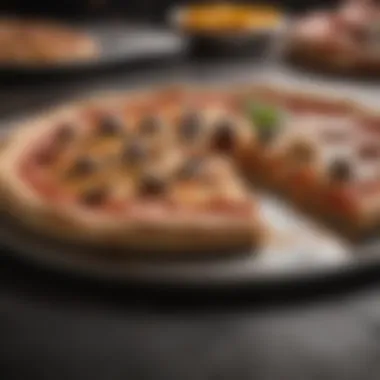

Taking a deeper dive into the pizza peel opens up a wealth of information for various culinary practitioners. Understanding how the pizza oven peel paddle functions leads to enhanced cooking results while reducing errors. It also emphasizes how a seemingly simple tool is, in fact, central to pizza craft. By exploring what this paddle has to offer, chefs—ranging from novice to experienced—will undoubtedly elevate their pizza-making skills.
The Role of the Pizza Peel in Culinary Practices
The pizza peel possesses a critical role in various culinary practices, notably in the art of pizza making. This tool, often viewed as secondary or even menial, proves vital once explored in depth. With deconstructed layers of operation, we can see how significant it is to smooth transitions from the preparation to the baking phase.
Primarily, the pizza peel serves as a mediator between the chef and the hot oven. Its function allows cooks to safely and effectively transport their creations, a straightforward concept that protects both the pizza's integrity and the chef's well-being. When executing the delicate maneuver of transferring a raw pizza, the peel ensures no toppings detach, no dough gets mishandled, and no burns occur.
Functionality in Culinary Practices
The pizza peel aids not just in transferring pizza but also in promoting an even baking process. When sliding a pizza onto the oven floor, its flat surface provides stability. Proper technique eliminates the issues such as dough sticking, which can complicate precious moments when timing is paramount among pizza enthusiasts.
Moreover, the choice of material for the peel considerably influences cooking outcomes. For instance, wooden peels, known for their lightweight nature, allow for easier movements, while metal peels excel at heat conduction. Each peel comes with its own unique advantages suited for different cooking techniques, thus enhancing the overall culinary experience.
Enhancing the Cooking Experience
In a practical sense, using a pizza peel can lead to greater creativity in terms of shape and style of pizzas. Given that the tool grants chefs freedom and comfort during video-worthy manipulations, delectable shapes become synonymous with opportunity rather than limitations.
The pizza peel is more than just a tool; it is the bridge between preparation and perfection in pizza making.
Additionally ,'by considering the ergonomics of managing a large peel, chefs foster a working space that is both efficient and open to experimentation. Therefore, prioritizing the peel that matches one’s cooking habit is essential—this enriches culinary practice, fosters skill, and yields favorable outcomes in complex foods.
Key Benefits to Consider
- Ease of Use: A well-designed pizza peel contributes to hassle-free production.
- Versatility: Perform various tasks from sliding pizza to serving.
- Safety Factor: Protects chefs from oven heat through extended handles.
- Creativity: Encourages innovative presentations in pizza design.
Emphasizing quality craftsmanship, serious culinary enthusiasts should carefully choose a peel that aligns with their specific needs. Thus, dialing into its anatomy and function elevates one’s culinary practices into advanced spaces. Understanding the significance of the pizza peel informs each aspect of concluding the final product basking in successful expectations.
Material Considerations for Pizza Peels
The pizza peel is not just a tool; it possesses unique properties based on its material. Selecting the right material hinges on factors such as heat retention, maneuverability, and durability. Each type has its own merits and trade-offs, influencing both the ease of use and the cooking process itself. Here, we discuss three primary materials used in making pizza peels: wood, metal, and composite materials. Understanding these distinctions allows culinary enthusiasts to optimize their pizza-making experience.
Wooden Pizza Peels
Wooden peels are perhaps the most traditional choice, valued for their insulating properties. Typically made from various types of hardwood, like maple or birch, these peels have a rustic charm. They are naturally non-stick, which helps prevent the dough from sticking during the transfer process. Moreover, they absorb moisture from the base of the pizza, helping create a crispier crust. However, it is important to maintain wooden peels. They should be hand washed and oiled regularly to prevent splitting and warping.
Advantages of wooden peels include:
- Low stick friction, reducing the chances of dough adherence.
- Crispiness enhancement by absorbing moisture.
- Aesthetic appeal of natural wood.
On the downside, wooden peels can be heavy and may require more effort during lifting and maneuvering.
Metal Pizza Peels
Metal peels, usually made from aluminum or stainless steel, offer a different set of features. They are lightweight, allowing for effortless handling when transferring pizzas. Their smooth surface diminishes the risk of sticking due to high heat characteristics. However, metal peels can retain heat, which helps achieve evenly cooked pizzas. This feature is beneficial when dealing with specific equipment like pizza ovens that open directly onto the flame, providing a higher thermal interaction.
Consider the following with metal peels:
- Aggressive maneuverability due to being lightweight.
- High heat conductivity, ensuring even cooking results.
- Durability against warping and cracking.
The potential pitfalls include occasional sticking if not properly prepared, thus requiring the use of semolina or flour as a preventive measure.
Composite Materials
While wooden and metal peels are popular, composite materials bring a blend of the best from each world. Typically made from a mix of plastics and hardwood, these peels balance durability with usability. They are resistant to moisture, leading to less warping than entirely wooden peels. Moreover, composite peels often combine properties that allow users to work effortlessly while transferring the pizza without excessive weight.
Benefits the come from composite peels:
- Moisture resistance, preventing warp and damage over time.
- Lightweight, offering ease of use.
- Enhanced durability, making them resistant to scratches and wear.
Drawbacks can include higher cost and a different feel, which some may find less tactile compared to classic wooden versions.
Understanding material considerations when choosing a pizza peel not only impacts functionality but also enhances the overall success of achieving a perfectly made pizza every time.
Choosing the Right Pizza Peel
Choosing the right pizza peel is more than a mere preference; it influences your overall pizza-making experience. The correct peel can streamline the process of putting in and retrieving pizza from the oven, enhance your cooking efficiency, and contribute to the final quality of the pizza. This section will cover how size, shape, and ergonomics play critical roles in selecting a peel that meets your needs. Not only should the peel be functional, but it should also align with your culinary style and personal comfort.

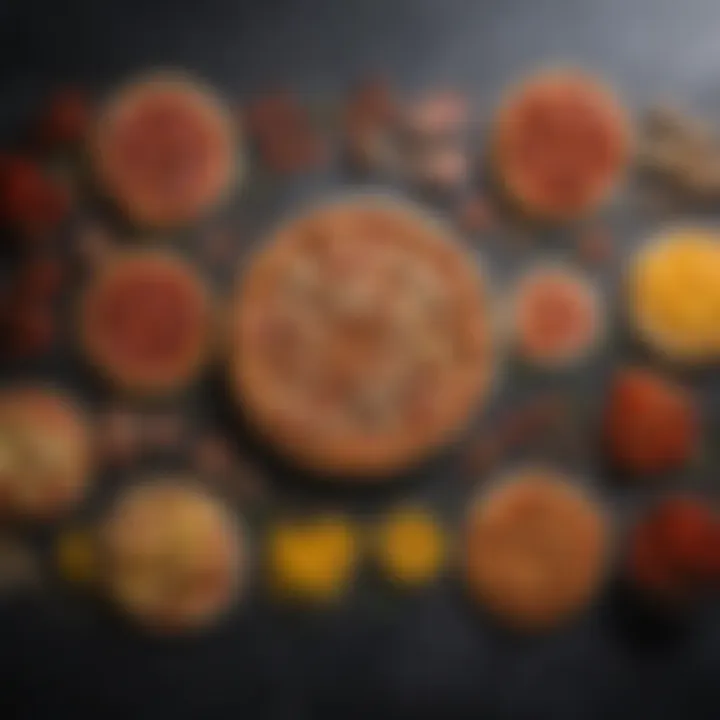
Size and Shape
When selecting a pizza peel, size and shape are vital considerations. Pizza peels come in various dimensions, impacting their usability for different types of pizzas. A larger peel may be suited for cooking multiple smaller pizzas, while a smaller, more compact peel enables greater control for personal pies. Common sizes are 12 to 14 inches for small pizzas or 16 to 18 inches for larger, traditional pizzas. It is essential that your peel can accommodate the size of pizzas you plan to make without overhang, as this can make handling difficult.
The shape of a pizza peel usually falls into two categories: square or round. A square peel provides a flat edge that simplifies the task of sliding pizzas onto and off of a stone or steel surface. Meanwhile, a round peel benefits circular pizzas much better, aiding efficiency during the transfer.
Handle Length and Ergonomics
Ergonomics significantly affects the user experience when handling a pizza peel. Typically, longer handles allow for better reach and safety, especially when handling hot pizzas in brick ovens. A 32 to 48 inch handle is appropriate for large ovens, ensuring that your hands are kept at a safe distance from the heat.
Conversely, shorter handles may provide increased control for kitchens where space is limited or in home ovens. A proper grip is crucial; if a peel feels uncomfortable during operation, it can disrupt the pizza-making process. Nor only does a well-balanced peel reduce fatigue, but it enhances precision and efficacy, allowing you to create flawlessly cooked pizzas each time.
The right pizza peel is integral. Not just for efficiency, but for creating quality results in your culinary endeavors.
Proper Usage Techniques for Pizza Peels
Understanding the right usage techniques for pizza peels greatly enhances the pizza-making experience. Whether you are preparing homemade dough or transferring a freshly baked pizza, mastering these techniques minimizes mistakes and ensures the best possible results. Knowledge about proper usage leads to better efficiency, less mess, and a superior final product.
Dusting Techniques
Dusting the pizza peel is a fundamental skill that serves multiple purposes in the pizza preparation process. When you add a dusting agent, often flour or cornmeal, to your peel, it creates a barrier that helps to prevent sticking. This reduces the likelihood of damaging the pizza when transferring it to or from the oven.
- Choose Your Dusting Agent: White flour can be used, but semolina or cornstarch helps with smooth sliding while lending a light crunch to the crust.
- How to Dust: Sprinkle a thin layer of flour or cornmeal onto the peel; don’t overdo it, as excess can transfer unwanted texture to your pizza.
- Rotate the Peel: After the dusting, quickly shake or rotate the peel to ensure the covering is even. This must be done efficiently to avoid time wastage as the dough may become sticky while waiting.
Remember, a well-dusted peel is key for an easy release of the pizza!
A well-established technique in dusting prepares a foundation for successful pizza handling, making it smoother to lift, place, or transfer with minimal friction. It’s an essential step that amateur cooks should master.
Lifting and Transferring Pizza
The precision of lifting and transferring the pizza can make or break the cooking outcome. Here, a few structured techniques come into play, which add value to your pizza preparation.
- Keep the Peel Level: Always maintain a straight posture with the peel. Lifting at an angle can cause the pizza to slide off unevenly sappping good dough if it catches improperly.
- Slide Under Wisely: When lifting the pizza from a surface, it's crucial to slide the peel under the crust rather than the toppings. This approach prevents the toppings from sliding off during the transfer. Aim to contact slightly beneath the edge of the crust with the peel.
- Quick In and Out: When transferring pizza to the oven, act fast. A long delay in the hot environment can cause the dough’s wet areas to strengthen adhesion to the peel. Swift movements ensure that the cooking begins every part gets appropriate warmth instantly.
- Mind the Rotation: After lifting the pizza, if aiming for indirect heat sources, tilt the peel to rotate the pizza while placing it within the oven. Ensuring even baking requires constant adjustment.
Following these methods greatly influences texture and quality while navigating the potential hazards associated with lifting. Making a slight mistake in this area may lead to pizza mishaps, such as toppings falling off or uneven bakes.
Common Pizza Peel Mistakes to Avoid
Understanding the common mistakes associated with using a pizza peel is important for anyone who wants to enhance their pizza-making skills. A pizza peel is an essential tool, and errors can easily diminish the quality of the finished product. This section discusses two major mistakes: overloading the peel and not preheating it. By avoiding these pitfalls, culinary enthusiasts can achieve better pizza results and enjoy the process more.
Overloading the Peel
Overloading the pizza peel is a frequent error that many makes. When too much topping is placed on the peel at once, it makes transferring the pizza to the oven a significant challenge. This mistake can lead to an imbalance and an uneven distribution of weight, increasing the risk of toppings falling off during the transfer.
Here are some reasons why avoiding overloading is essential:
- Improves ease of transfer: A well-balanced pizza is much easier to slide off the peel and onto the baking surface.
- Maintains pizza integrity: Too much weight might lead to a broken crust or displaced toppings, affecting the final presentation and way it cooks.
- Promotes even baking: When the pizza is centered and properly balanced on the peel, the heat distribution is more uniform, reducing chances of soggy areas.
For the best results, consider loading toppings to a moderate amount while respecting each pizza’s diameter and design.
Not Preheating the Peel
Failure to preheat the peel is another common misstep. Preheating helps to establish a warm surface, ensuring that the pizza base begins cooking immediately upon contact. Neglecting this step can lead to sticking, making it very difficult to release the pizza into the oven.
Reasons to always preheat your peel:
- Aids in release: A preheated surface allows the dough to remain less sticky, making the sliding action smoother.
- Improves crust development: Immediate contact with heat contributes to a better rise and crispiness of the crust.
- Prevents a soggy bottom: Preheating helps to capture some moisture, avoiding a wet crust that defeats the purpose of homemade pizza.
To preheat the peel effectively, simply place it in an oven heated to a low temperature for a few minutes before assembling your pizza. This will set you up for success.
Always remember: Avoiding these common mistakes enhances not just the texture but also the overall aesthetics of your pizza.
By being mindful of these mistakes, pizza lovers can greatly improve their culinary creations. A well-managed loading process and the preheating of the peel create a foundation for perfection in pizza-making.
Cleaning and Maintenance of the Peel
Effective ifs an important component of quality cooking. The pizza peel is no exception. Cleaning and maintaining your peel ensure its longevity and the safety of your culinary creations. A well-kept peel prevents buildup of residues, resulting in optimal performance each time you make pizza.

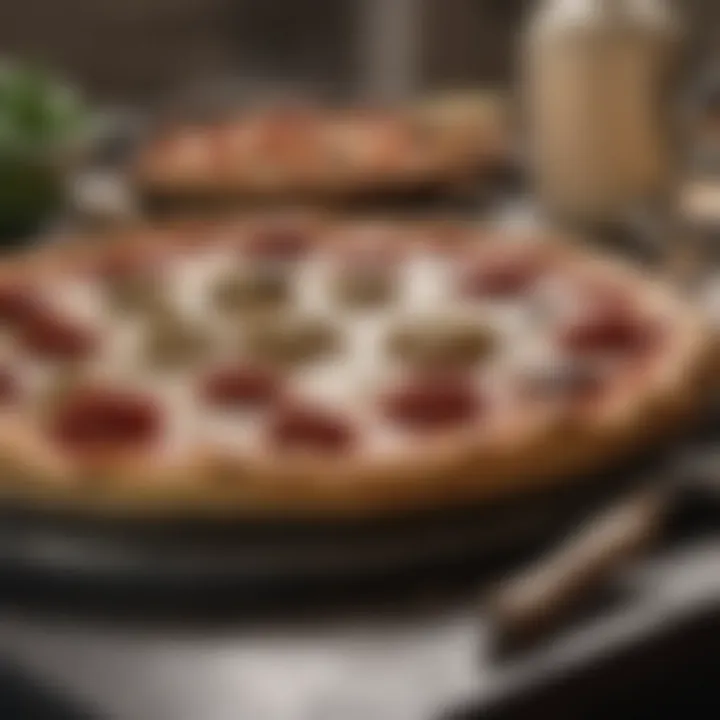
Cleaning Wooden Peels
Wooden pizza peels provide an element of tradition, adding rusticity to the cooking experience. For wooden peels, it is crucial to clean carefully to maintain the integrity of the wood. Here are steps to consider:
- Rinse the peel after use to prevent stains or food particles from hardening.
- Use hot water and a non-abrasive sponge to clean the surface. Avoid excessive soaking, which can warp the wood.
- After washing, sanitize lightly with a white vinegar and water mix. This helps remove bacteria.
- Dry it thoroughly before storing, ideally air drying to avoid moisture buildup.
Tip: Always treat your wooden peel with food-safe mineral oil to preserve its surface. Apply it periodically to keep the wood nourished.
Maintaining Metal Peels
Metal pizza peels, known for their durability and ease of use, require different care practices compared to wood. Watching for scratches and dents can prolong the peel's life:
- Always wipe down the metal surface after use. This removes grease and prevents rust.
- Avoid abrasive cleaning materials that could scar the surface. Instead, a soft cloth with warm water typically does the job.
- Store metal peels in a clean environment. Hanging them up, is a good way to avoid unnecessary contact with dirt or grease.
- For stainless steel peels attention is needed too. Regularly inspect the surface for corrosion, and if any is spotted, a gentle steel wool pad can restore the finish.
With consistent care, both wooden and metal pizza peels can serve you well in your culinary pursuits for many years. Understanding the proper cleaning and maintenance techniques turns your peel into an enduring asset in your kitchen.
The Influence of Pizza Peels on Cooking Results
The pizza oven peel paddle plays a crucial role in the cooking process. Its impact is often underestimated, but it can significantly determine the outcome of the dish. Understanding this influence is essential for anyone looking to elevate their pizza-making skills.
Heat Retention and Distribution
One of the primary functions of a pizza peel is managing heat. The choice of material, whether wood, metal, or composite, directly affects how well it retains and distributes heat. For instance, metal peels, like the ones from the brand LloydPans, conduct heat effectively, which helps in cooking the base evenly. This conduction is necessary, especially in high-temperature setups, such as wood-fired ovens.
On the other hand, wooden peels have insulating properties that can slow the transfer of heat. This characteristic can be beneficial when working with delicate pizzas that require careful handling before entering the oven. The surface cooling slightly can make it easier to slide the pizza off once it has been placed. Thus, the choice of peel can indirectly alter cooking results through its relationship with heat.
When deciding on a peel, consider its thermal qualities as these will affect how well and how quickly the pizza cooks. Research indicates that optimal heat distribution plays a vital role in achieving that perfect crust which is crispy on the outside and fluffy on the inside.
Impact on Pizza Texture
The texture of the finished pizza is heavily influenced by the pizza peel used. The way heat interacts with the dough affects how it rises and browns. If the peel is overly cold or not preheated, the dough could stick or sag, leading to uneven cooking. Metal peels can sometimes promote a slightly tougher crust due to how efficiently they transfer heat, while wooden peels tend to allow for a softer and airier texture in the final product.
Moreover, the choice also impacts the cooking time. A well-preheated metal peel will typically produce a cooked base quicker than a cold one. A slightly less-than-adequate base can affect the texture, resulting in a soggy yet burnt finish. Therefore, temperature management is one of the core aspects that can improve the overall enjoyment of the pizza.
"The pizza peel is not just a tool, but a defining element that influences cooking characteristics."
By understanding these factors, both amateurs and seasoned cooks can better utilize their pizza peels to exemplify the taste and texture of their pizza. Choosing the right peel, coupled with careful handling, is an investment in achieving consistently higher culinary results.
Alternative Uses for the Pizza Peel
The pizza peel, primarily associated with pizza, has several underappreciated applications in the kitchen. Understanding these alternative uses enhances its value, making it a versatile tool for culinary enthusiasts. Furthermore, recognizing how to maximize its purpose not only elevates your cooking but ensures efficient use of your kitchen space.
Baking Bread
The pizza peel can double as an excellent aid in bread baking. This is particularly useful if you enjoy making loaves that require high heat, such as sourdough or artisan bread. Here are several benefits to using a peel for bread:
- Easy Transfer: You can slide bread in and out of the oven effortlessly.
- Preventing Direct Contact: It avoids the need for transferring dough to a hot pan, reducing the risk of damage to the loaf during the transfer.
- Perfect Size: Many peels are designed to accommodate various loaf sizes.
When using the pizza peel for bread, it is key to dust it lightly with flour or cornmeal. This will create a non-stick surface and ensure that the dough does not stick—as this can affect your bread's appearance and shape. A well-maintained peel facilitates a smooth process, yielding beautifully baked bread each time.
Serving Platter
Another innovative use for the pizza peel is as a serving platter. The large, flat surface is perfect for a variety of foods, making it especially useful when entertaining guests or hosting gatherings. Here are key reasons you've to consider using it for serving:
- Aesthetics: A wooden or metal peel can serve as an attractive backdrop for your culinary displays.
- Versatility: Use it for presenting not only pizza, but also cheese, charcuterie boards or even desserts.
- Easy Transport: The handle provides a sturdy grip, making it easy to carry food from the kitchen to the table.
Utilizing a pizza peel as a serving board is a smart way to combine functionality with good appearance.
Overall, the diverse applications of the pizza peel extend well beyond its traditional use. By incorporating it into your culinary endeavors, whether in baking or serving, you enhance not only your kitchen efficiency but also elevate your dining experiences.
Summary and Culmination
The pizza oven peel paddle is more than just a tool; it is a vital instrument that defines how one engages with the pizza-making process. This article has explored several pivotal aspects related to this essential item in the kitchen, enlightening culinary enthusiasts on the importance of selecting the appropriate peel that meets their baking needs.
First, the discussion on various materials, such as wood, metal, and composites illustrates the nuanced choices available. Each material brings a unique set of benefits and drawbacks, influencing not only functionality but also the final outcome of the pizza. Knowing these distinctions can significantly alter the cooking experience.
Proper usage techniques were highlighted extensively. Controlling dusting techniques and mastering the lifting and transferring of pizzas requires practice. These skills prevent sticking and ensure that the pizza remains intact during transportation. Through careful handling, cooks can enhance every step of preparation.
Cleaning and maintenance, often overlooked by many, are critical for ensuring a long-lasting instrument. This aspect ensures that the peel functions well and provides excellent results consistently.
Additionally, understanding the influence of the pizza peel, such as its effect on heat retention and texture, plays a fundamental role. Subtle variations can lead to differing results, affecting the overall appreciation of the meal.
A well-chosen pizza peel not only eases cooking but elevates the dining experience by allowing authenticate preparation that is often central to many culinary cultures.
Alternative uses also open new doors for creativity, showing that the pizza peel handles more than baking. From baking bread to acting as a stylish serving platter at meals, this tool is versatile.







